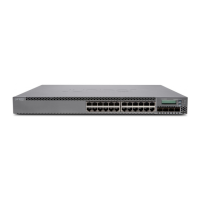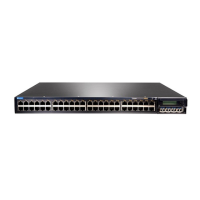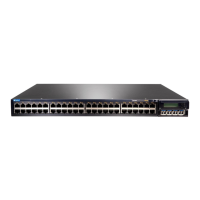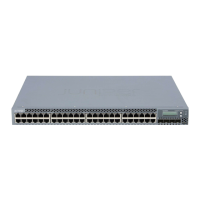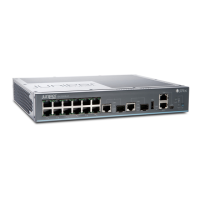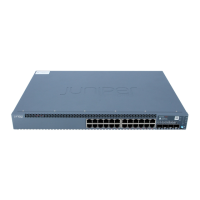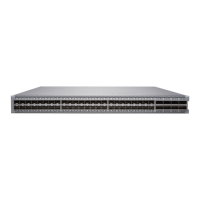Table 25: show route extensive Output Fields (continued)
Field DescriptionField Name
Number of routes in the routing table and total number of routes in the following states:
• active (routes that are active).
• holddown (routes that are in the pending state before being declared inactive).
• hidden (routes that are not used because of a routing policy).
number routes
Route destination (for example: 10.0.0.1/24). The entry value is the number of route for this destination,
and the announced value is the number of routes being announced for this destination. Sometimes
the route destination is presented in another format, such as:
• MPLS-label (for example, 80001 ).
• interface-name (for example, ge-1/0/2).
• neighbor-address:control-word-status:encapsulation type:vc-id:source (Layer 2 circuit only; for example,
10.1.1.195:NoCtrlWord:1:1:Local/96).
• neighbor-address—Address of the neighbor.
• control-word-status—Whether the use of the control word has been negotiated for this virtual
circuit: NoCtrlWord or CtrlWord.
• encapsulation type—Type of encapsulation, represented by a number: (1) Frame Relay DLCI, (2)
ATM AAL5 VCC transport, (3) ATM transparent cell transport, (4) Ethernet, (5) VLAN Ethernet,
(6) HDLC, (7) PPP, (8) ATM VCC cell transport, (10) ATM VPC cell transport.
• vc-id—Virtual circuit identifier.
• source—Source of the advertisement: Local or Remote.
route-destination
(entry, announced)
Protocol header information.TSI
(Next-to-the-last-hop routing device for MPLS only) Depth of the MPLS label stack, where the
label-popping operation is needed to remove one or more labels from the top of the stack. A pair of
routes is displayed, because the pop operation is performed only when the stack depth is two or more
labels.
• S=0 route indicates that a packet with an incoming label stack depth of two or more exits this router
with one fewer label (the label-popping operation is performed).
• If there is no S= information, the route is a normal MPLS route, which has a stack depth of 1 (the
label-popping operation is not performed).
label stacking
Protocol from which the route was learned and the preference value for the route.
• +—A plus sign indicates the active route, which is the route installed from the routing table into the
forwarding table.
• - —A hyphen indicates the last active route.
• *—An asterisk indicates that the route is both the active and the last active route. An asterisk before
a to line indicates the best subpath to the route.
In every routing metric except for the BGP LocalPref attribute, a lesser value is preferred. In order to
use common comparison routines, Junos OS stores the 1's complement of the LocalPref value in the
Preference2 field. For example, if the LocalPref value for Route 1 is 100, the Preference2 value is -101.
If the LocalPref value for Route 2 is 155, the Preference2 value is -156. Route 2 is preferred because it
has a higher LocalPref value and a lower Preference2 value.
[protocol, preference]
415Copyright © 2017, Juniper Networks, Inc.
Chapter 14: Operational Commands (DHCP and DHCP Relay)

